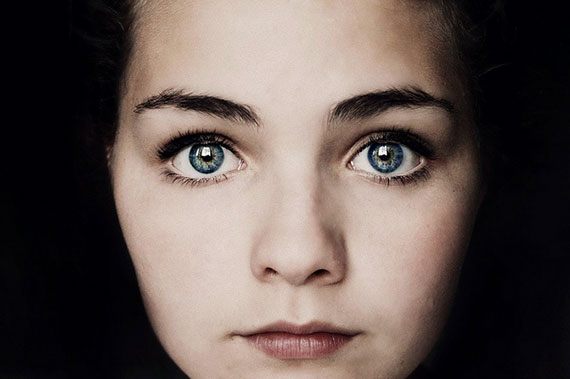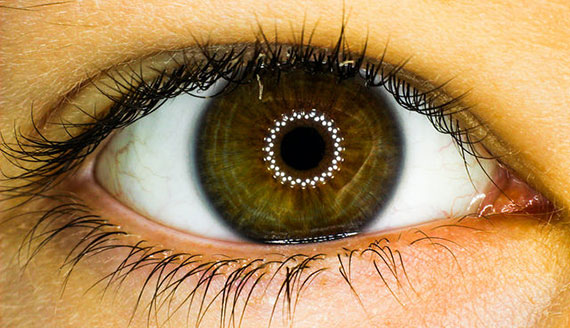While most of you know what a portrait photography catch light is, bear with me. At some point, it was a new idea for you, just as I’m sure it is for some of the other readers. In the interest of being thorough, in today’s photo tip, let’s have a quick look into the catch light.
Simply put, a catch light is the reflection of the portrait lighting source in the eyes.

Photo by Emma Brown; ISO 1600, f/5.0, 1/125-second exposure.
We generally just think of it as a specular highlight in the eye, but it can be (and is) a vital part of the image. Particularly in portrait photography.
While the old cliché that “the eyes are the windows to the soul” may or may not be true, a catch light makes the eye appear brighter and more exciting. Eyes without a catch light appear dull and lifeless.
If you have catch lights in the eyes, they are generally not noticed. If you don’t have them, their lack can ruin a photo. Or not! If you want to make a person appear evil—why you’d want to I don’t know—an old cinematographer’s trick is to eliminate the catch lights.
Try it this Halloween, you may win a contest or two!
If you don’t want your subject to appear evil, a catch light in both eyes is vital. So vital in fact that if photographers are using a lighting pattern where they are not getting a catch light, they will add a special “eye” light to their lighting setup.
Typically, an eye light will be of low intensity so it doesn’t affect the highlights and shadows of the overall lighting pattern. It just puts a little glint in the eye.
In learning how to create various lighting patterns or trying to determine what type of lighting the photographer used, it is often helpful to examine the catch lights.
The eye acts like a mirror and will reflect the light source(s). By studying the reflections, we can determine how many lights were used, what type of light (diffused or hard light) and their general location in relation to the model.
These are all good things.
A bad thing about the refection showing the type of light, is that sometimes that reflection is unattractive and takes away from the photo. Though purely a matter of opinion if you’ve ever noticed the reflection of a ring light, it (to me) looks creepy and I think it is why ring lights are not more popular.

photo by Axel Naud
By the way, a “ring light” is an on camera flash that goes all the way around (rings) the lens.
So, bottom line, make absolutely sure you have a catch light—in both eyes—unless you have a specific and planned reason not to. This photo tip is one of the vital rules of portrait photography that should never be broken whether you are shooting people, pets, or anything else with eyes.
About the Author
Dan Eitreim writes for ontargetphototraining.com. He has been a professional photographer in Southern California for over 20 years. His philosophy is that learning photography is easy if you know a few tried and true strategies.
Go to full article: Catch Light in Portrait Photography
What are your thoughts on this article? Join the discussion on Facebook
PictureCorrect subscribers can also learn more today with our #1 bestseller: The Photography Tutorial eBook
The post Catch Light in Portrait Photography appeared first on PictureCorrect.